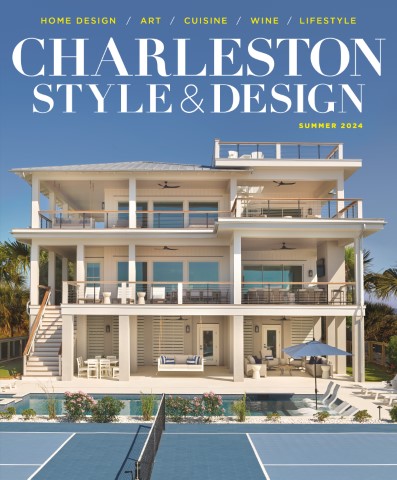IF ACTORS ARE ALL ABOUT ENTRANCES AND PLAYWRIGHTS ABOUT EXITS, designers in the theater are about complementary frameworks, physical and emotional. From elaborate to humble, with sets and props it’s everything with a purpose and everything in its place—the unsung narratives of the theater. After all, it’s not just the writer and actor who tell the story.
A designer’s job is to define spaces and populate them with meticulously selected objects that help convey not only a mood but the story itself. Scenery is more than a backdrop. Stage design helps shape the contours of a piece and define how the audience reacts to it.
“Design elements are the biggest piece toward audience understanding,” says Cody Rutledge, resident designer for Charleston Stage. “Each element is created specifically to get the story across. Everything is developed from layers of research and concepts. Everything design-wise [is done to] make sure the message of when, where and why is understood. It then becomes the actors’ job to use the environment that is created to bring the script to life.”
Design underscores the meaning of a script, but it also may deepen and expand that meaning. Additional layers of a story can be devised with visual imagery alone, without employing any words at all. These walls can talk.
“Design elements can give you a sense of tone, the mood of a story being told, which can be critical, like a bright feel to comedy and a somber cast to tragedy,” says designer Kim Powers, a frequent Charleston Stage collaborator. “You want to support the text, so you do whatever you can to create or enhance a feeling. But you always work with the director to make certain you’re telling the same story. You don’t want to compete.”
The various components of design, costume, lighting and scenery can’t all be equally important all of the time, so a production can’t risk them competing with each other in saying what the play is trying to say. But can visual imagery be its own kind of text?
“Sometimes,” says Powers. “When you are establishing a tone, it needs to be quick and clear in terms of what the audience is taking in but appealing enough that they understand and are taking it in on an emotional level.”
It’s the inner logic of a play that matters, and designers need to be true to it. Generally speaking, every object, even the smallest prop, should fit into the world the playwright has created, even as the set defines aspects of the production.
“This is true for the most part, though there are rare cases where designers will pick something completely out of the logic of the world on purpose to give that object significance, meaning it is crucial in the story they are trying to tell,” adds Rutledge. “It becomes a focal point of the message.”
Theater design principles are no less applicable to film and television (and to the interior design of a home, for that matter). Rutledge cites a classic example of the rare object effect: The vibrant red of a little girl’s coat in the otherwise black-and-white color palette of the movie Schindler’s List.
But beware the anachronism. “The moment you have an anachronism on stage, it’s the moment an audience member will be pulled out,” says Powers. “If something does that, it is not worth having on stage.”
Sometimes the hardest part of the designer’s task is fully understanding and adapting to the limitations of
a performance space, of budgets, or to a production with a lot of moving parts. Powers says clear communication at all levels is vital.
“Any show is going to be better when you like the people you’re working with,” she insists. “It’s so relationship-based in the theater. Good art in the theater comes from good relationships.” *
Bill Thompson covers the arts, film and design.



